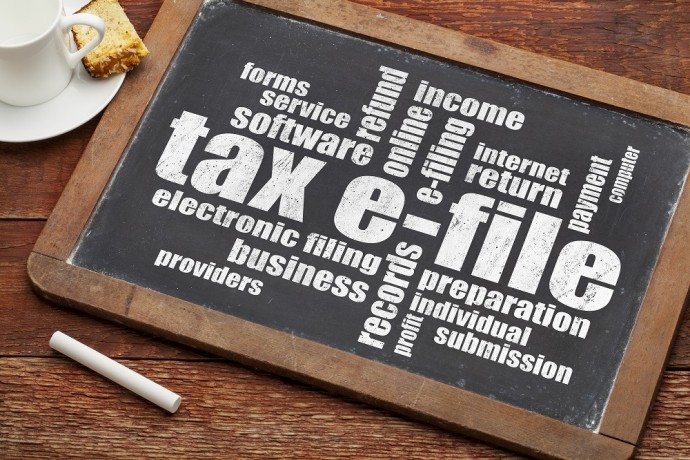Not too long ago accountants would prepare personal tax returns with paper and pencil. They had the latest copy of the Income Tax Act, stacks of information slips, adding machines and a telephone by their side. The telephone was required so they could call tax authorities for missing information or clients. They were not always able to get the carry-forward balances and other information from the tax authorities by phone. For that they would send letters hoping to get a reply before tax returns were due. They filed the returns with the information they could get, and hoped that the changes were not too dramatic.
During the mid to late ‘80s the Canadian Markey saw the influx of computerized income tax preparation software. Then Revenue Canada (now known as Canada Revenue Agency) eventually refined standards and concepts which allowed computer-generated and printed returns to be filed with the agency. In the mid ‘90s they made is possible for taxpayers to file returns electronically while using various forms of electronic data interchange. By then the copied, written and printed forms were dissipating. The yearly rush to the post office by the evening of April 30th was greatly replaced by transmissions and the dreaded wait for conformation reports.
Most of the preparation and processing of returns had been greatly computerized by the turn of the century. A large part still remained mainly a manual process: getting information from the CRA. The historical information on taxpayers was kept on CRA computers. It could only be accessed by tax preparers by telephone, mail request or fax. The fax and telephone base was frequently overwhelmed. Tax preparers found it harder to get information on a timely basis.
In 2006 the CRA realized there was a problem and took its first step when it announced a way for tax preparers, who had authorization from their clients, to gain access to their tax clients’ databases through the service called, Represent a Client (RAC). It wasn’t until the next year when RAC was developed enough to include business tax clients too. Within the first years RAC only provided basic information like, prior year tax returns, assessment notices and statements on accounts.
Over many years the information expanded to include copies of information slips. The ability to request adjustments to prior returns and file information returns (like GST), from within RAC was added. A tax preparer needed to access the computer and not the phone to gain the missing information.
With the tax preparers and the CRA realized how many errors would be avoided and how much time could be saved there was no turning back. In the early year of 2013, two different projects were introduced one was from the CRA and one from the CCH Canada Ltd. It greatly improved the relationship between tax preparer and the CRA.
In the beginning of the projects the CRA had made it possible for the tax preparers to provide information and or documents to the CRA through the RAC branch. For a while many tax preparers would have to respond to the CRA requests for information by photocopying or faxing documents. That was the most complicated parts of the engagement. The fax numbers rang busy for hours. Some of the faxes would be interrupted or the assessor would not receive any or all of the fax.
The module made it easier to communicate with the CRA easier and more efficient since allowing the preparer to attach documents in the RAC. The use of the RAC for two way communication greatly improved the future relationship between CRA and the tax preparers.
The second project, introduced all at one time by the CCH Canada (Taxprep), was equally promising. For many years the company had received inquiries from a number of client firms about letting Taxprep gain the information directly from the RAC. By having entered the client’s SIN and then searching throughout dozens of web pages to find and gain the data the enter that data in the client’s tax file, instead of having to launch RAC. Partners believed it would be great if the software could just import the data once the user had authenticated themselves.
The CCH hoped to make a “web scraping utility” to include in its 2012 T1 software. The CCH company presented that project to the CRA in early 2012. They hoped the approval would be granted before introducing the production of the T1 software within late January and mid-February 2013. This production was going to be called TaxprepConnect. A number of developing partners choose to test this new software while only using early pre-production versions of T1 software. For taxpayers’ security, the users had to reenter their RAC user name and software every time they began the software.
The developed partners would use early versions of the software so they could download information from the RAC directly to the clients tax file. For this the response was overwhelmingly positive. When the new version was released, the CCH had not received approval or rejection from the CRA. The decision was to activate TaxprepConnect for general use.
For the first two weeks in March 2013, the users of Taxprep T1 2012 was able to update client carry-forward balances and information slips from the RAC, which were imported into the software and used in the data fields of the client’s income tax file. The CRA voiced a number of concerns about problems this might have with server capacity and the e-file process. Some security measures and other considerations also. The CCH response was to immediately deactivate the service. The process was certainly proven to work but, its popularity might have brought on its early suspension.
The CRA made a working group with developers to come up with a solution that could make the tax preparation process easier for third-party preparers and individuals in July 2013. The CRA seemed hopeful that the outcome of the process; as one representative noted: “We are confident that this collaborative effort between the CRA and software developers, including CCH, will provide an end solution that facilitate the filing of taxpayers’ returns in ta secure, efficient, and accurate manner.”
Since the tax professionals had a small taste of what can be done when software developers can gain access to the data which is already available through the RAC, it will be difficult for them to turn back now. Will the RAC software be the pipeline for a secure two-way communication with the tax preparers and the CRA? Will the continuing talks between the CRA and developers further use of web scraping techniques for direct access of RAC on an interim basis? Will the CRA develop on its own, a utility to directly export information form their site?
The answers, for now, are elusive. One thing for certain though, we have seen what can be done in the future.
If you need help with your Tax Preparation in Ottawa then consult with these trusted tax preparation experts today.
Address: 503 Rideau St
Ottawa, ON K1N 5Z5
Tel: (613) 903-6240
Email: info@ottawataxpreparation.ca





